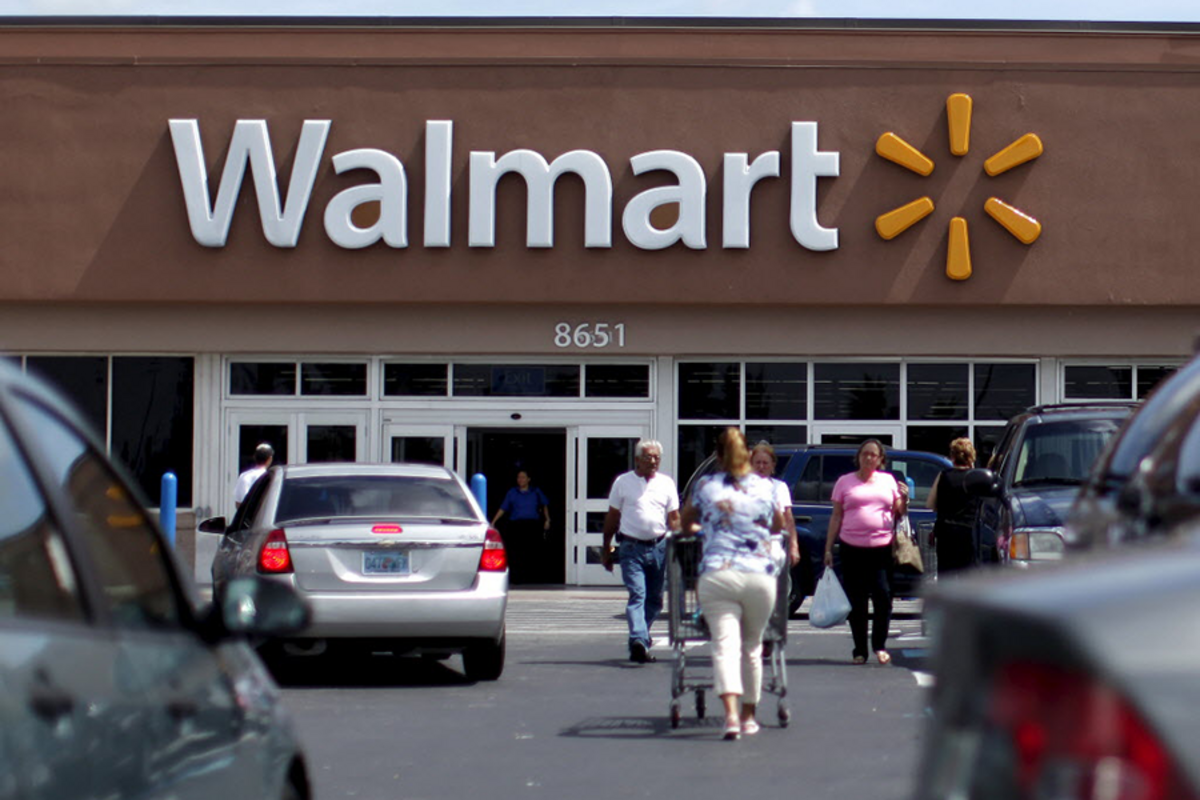Walmart starts to make good on massive clean energy promises
Loading...
When Walmart hits the headlines, it's often not for the most positive reasons. From allegations of predatory pricing and poor working conditions to low wages, the company has been involved in so much controversy that when it pledged in 2005 that its business would one day be supplied by 100 percent renewable energy, there was healthy skepticism that the company was engaged in greenwashing.
As recently as last year, skepticism still held sway, with a nonprofit advocacy group that the company’s sustainability initiatives "are heavy on admiration-inducing goals and astonishingly light on execution."
But views of its efforts are starting to shift. Walmart has installed 105 megawatts of solar panels on the roofs of 327 stores and distribution centers, enough to make the company the single biggest solar power generator in the United States, Forbes . In some states, 26 percent of its power comes from renewable sources.
The company’s 2005 has seemed to help its public image somewhat, with the share of Americans reporting an unfavorable view of the company dropping from 38 percent in 2005 to 20 percent in 2010, according to , a news website focused on climate change.
But it has also been a part of a broader greening of energy sources as several major corporations use their scale and buying power to increase the deployment of clean energy projects across the country.
- In 2009, Google entered into a with NextEra Energy Resources to supply the Internet giant with 114 megawatts of power from its wind farm in Story County, Iowa.
- In February, Apple announced an $848 million solar deal – an investment that was pivotal in helping its recipient, First Solar, complete a in Monterey, Calif.
- Ninety percent of furniture retailer Ikea's US stores have rooftop solar panels installed, and the company will have invested $1.9 billion in solar power by the end of the year, according to .
Last month, Walmart entered into a 10-year contract to buy 58 percent of the estimated output from Pattern Energy Group's 200 megawatt in Comanche County, Texas. The company aims to use seven billion kilowatt hours of renewable energy by 2020, and Logan’s Gap could supply nearly one-fifth of that, according to Mark Vanderhelm, Walmart's vice president of energy.
"That's a significant leap forward on our renewable energy journey," he said, according to .
For years, Walmart was wary of entering into long-term renewable energy contracts. But "through information and education, Walmart has become comfortable with longer contracts," the company said in its Approach to Renewable Energy overview.
Government subsidies and other aspects of the agreements have made the programs cost-effective.
For its solar rooftops, for example, Walmart doesn't pay to install the panels. The installers – usually SolarCity, the company co-founded by Tesla Motors CEO Elon Musk – pay for installation, then enter a long-term power purchase agreement with Walmart.
These agreements are intended to be mutually beneficial: Companies like Walmart get electricity at cheaper rates than what the local electric utility would charge, and the power providers get a guaranteed, long-term customer that makes it easier to secure low-cost financing for the project.
The projects are also incentivized by government subsidies. The federal investment tax credit, for example, allows investors to deduct 30 percent of the cost of building these projects. In California, state subsidies in the form of green rebates and grants have allowed SolarCity to expand their partnership with Walmart even more. SolarCity has installed backup batteries developed by Tesla at a dozen Walmart locations in California, which can store solar power during the sunniest parts of the day, then slowly release it when needed.
"The value proposition is really obvious," David Ozment, Walmart's senior director of energy, told Forbes. "Why put up our own capital?"
In the past, the withdrawal of federal subsidies has severely damaged the renewable energy industry. Wind installations in the US dropped in 2013 after a tax credit expired. But companies like Walmart say they don't expect this investment from big business to slow down any time soon, even with the federal green energy tax credit set to expire in 2017.
"It's an opportunity for utilities to rethink their business model," Mr. Ozment told Forbes. "There's no reason there can’t be an adjustment."
[Editor's note: The original version misstated the share of energy that Walmart gets from renewable sources.]





